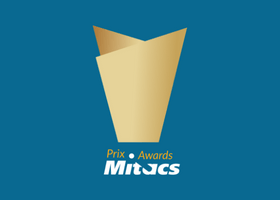The crunchy, puffed product made from yellow peas and bread crumbs in the lab at the University of Manitoba by research student Maria Arzamendi.
Arzamendi said the crunchy puffed product, that has the distinct taste of a legume, could one day replace the bags of empty carb snacks currently lining supermarket shelves.
“We know the trend, so why not make it healthier?” she said. “We know people like Cheetos, we know people like chips, so we’re trying to mimic a Cheeto, though it’s not as puffy and we’re trying to get there.”
The puffed bread and pea concoction is tested for a number characteristics — including texture, colour, moisture, protein and more.
“We look at the amino acid profile, the lipid profile, the fibre and carbohydrates and the biochemistry behind it,” Arzamendi explained. “We’re not only looking to make it healthy, but also sustainable by using leftover bread crumbs, which gives the crumbs a second use.
“It has a lot of applications, environmentally speaking,” she added. “We’re trying to combine those two areas: sustainability with food sciences.”
Arzamendi’s research at the U of M was funded through the Mitacs Globalink program.
Mitacs is a national, non-profit organization that connects international students with professors at universities in Manitoba and across the country to assist on various projects. It is funded by the federal and provincial governments, as well as university and industry partners. This year, 774 international students were deployed to 45 universities in Canada.
Koksel said the experiments done by Arzamendi support the university’s strategic research into sustainable, just foods and also falls in line with the federal government’s initiative to increase the value of Canadian crops with research into plant-based meat alternatives, funded by the Protein Industries Supercluster.
“One of the bigger challenges that we’re trying to tackle is how to make these plant-based puffed foods healthier,” Koksel said. “The challenge is that the higher the protein, the higher the fibre, it’s more difficult to puff them, they get harder and there’s issues related to texture and structure.”
Arzamendi returned to Mexico in early August but will continue to collaborate with folks at the U of M from abroad as they work towards publishing the results of the 12-week research project.
“Seeing all the food waste in the world, and that there’s not a lot of focus on how to do second generation products, that’s a motivation for me — to see the impact these types of foods can have,” Arzamendi said.

